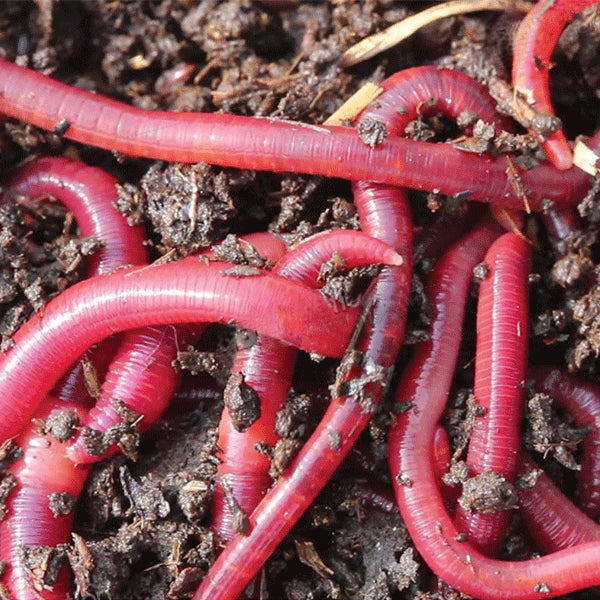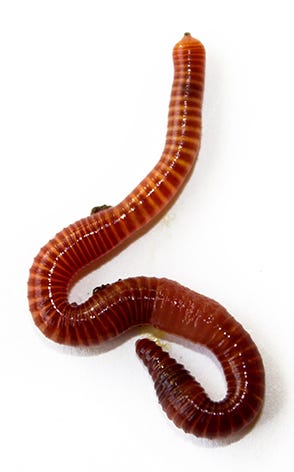Red wigglers: Learn their benefits
Red wigglers: Learn their benefits
Blog Article
Red Wigglers: Your Eco-Friendly Remedy for a Greener Garden
Red wigglers, or Eisenia fetida, provide a sustainable approach to improving garden wellness via vermicomposting. These worms not just assist in the failure of natural waste however also add to boosted soil framework and fertility. By integrating red wigglers into your horticulture techniques, you can successfully take care of waste while supporting a vivid community (red worms). The advantages expand past mere composting; recognizing the subtleties of their treatment and optimal usage can dramatically raise your horticulture initiatives. What necessary techniques can guarantee your vermicomposting system thrives while optimizing its effect on your garden's vigor?
(red wigglers for sale)
What Are Red Wigglers?
Although commonly incorrect for routine earthworms, red wigglers (Eisenia fetida) are an unique varieties understood for their effectiveness in composting raw material. These worms thrive in rich, organic environments, such as compost heap and vermicomposting systems, where they play a vital function in damaging down waste. Unlike their more common equivalents, red wigglers favor a warmer habitat, usually between 55 ° F and 77 ° F, which optimizes their task and productivity.
Red wigglers are identified by their reddish-brown pigmentation and fractional bodies, which can mature to 4 inches in size. They have an unique capability to consume and digest natural materials at an impressive price, processing as much as half their body weight daily. This fast decomposition procedure not only improves the dirt but additionally adds to the overall wellness of the garden community.
In regards to recreation, red wigglers are prolific, capable of producing cocoons which contain multiple eggs. This enables fast populace growth, making them an excellent option for composting ventures. Their adaptability and starved cravings for natural waste placement red wigglers as an important ally for environmentally aware garden enthusiasts looking for lasting techniques.
Benefits of Making Use Of Red Wigglers
Utilizing red wigglers in the yard offers various advantages that enhance both dirt quality and plant health and wellness. These earthworms are remarkable decomposers, damaging down raw material such as kitchen scraps and lawn waste right into nutrient-rich spreadings. These castings, often described as "worm gold," offer vital nutrients that boost dirt fertility, promoting dynamic plant growth.
Red wigglers additionally enhance soil structure. The visibility of red wigglers boosts microbial activity in the soil, developing a growing environment that adds to condition resistance and boosted plant health and wellness.
One more substantial benefit of making use of red wigglers is their capability to reduce waste. In summary, incorporating red wigglers right into horticulture practices returns substantial benefits, making them a useful addition to any eco-conscious garden.
(Western North Carolina Worm Farms)
Just How to Beginning Vermicomposting
To start vermicomposting, it's vital to create an appropriate atmosphere for red wigglers to prosper, as their success straight impacts the efficiency of the composting process. Begin by picking a container, such as a plastic or wood container, with appropriate drainage and ventilation. A size of around 2 square feet is optimal for a house, enabling a convenient worm populace.
Following, prepare bed linens material that is wet but not overly damp. Shredded paper, cardboard, and coconut coir are superb options, supplying a comfy environment while also acting as a carbon source. Fill up the bin with 4 to 6 inches of bedding.
After establishing the bedding, introduce your red wigglers. A typical beginning populace has to do with 1 pound of worms, which can take in approximately half an extra pound of food scraps daily. It is important to add food scraps progressively, focusing on veggie peelings, fruit waste, and coffee premises, while preventing meat, dairy products, and oily foods to avoid smells.
Maintaining a Healthy Worm Container
Once your red wigglers are resolved right into their brand-new bed linens, maintaining a healthy and balanced worm bin comes to be critical to make sure optimal composting problems. The primary aspects to monitor include wetness, temperature level, and oygenation. Ideally, the worm container must be maintained wet but not soaked; a humidity degree around 60-70% is optimal. To accomplish this, frequently check the bedding and add water as required, while additionally making use of completely dry products such as shredded paper to take in excess moisture.
Temperature control is just as essential. Red wigglers prosper in settings in between 55 ° F and 77 ° F(13 ° C to 25 ° C) Stay clear of exposing the container to severe temperature levels; extreme heat can kill the worms, while extreme cold can slow their task.
Aeration is critical to avoid anaerobic problems, which can result in unpleasant smells and hurt the worms. Turn the bedding gently every few weeks to promote air flow and distribute food uniformly.
Feeding your red wigglers is an additional crucial facet. Deal a balanced diet plan of kitchen scraps, avoiding citrus and spicy foods, which can be destructive to their wellness. By consistently checking these factors, you can guarantee a growing environment within your worm bin.

Tips for Using Worm Spreadings
Consistently integrating worm spreadings into your garden can substantially improve Source soil health and wellness and plant development. To properly utilize worm spreadings, begin by figuring out the appropriate application price, which normally ranges from 10-20% of the overall soil volume. This makes sure ideal nutrient accessibility without frustrating your plants.
When applying worm spreadings, mix them into the leading couple of inches of dirt around recognized plants or include them right into your seed-starting mix for brand-new seedlings. Furthermore, consider producing a worm tea by soaking worm castings in water for 24-48 hours.

Conclusion
The use of red wigglers in horticulture techniques presents a sustainable approach to squander management and dirt enrichment. The assimilation of red wigglers into horticulture routines ultimately sustains both environmental balance and farming productivity. red worms.
Report this page